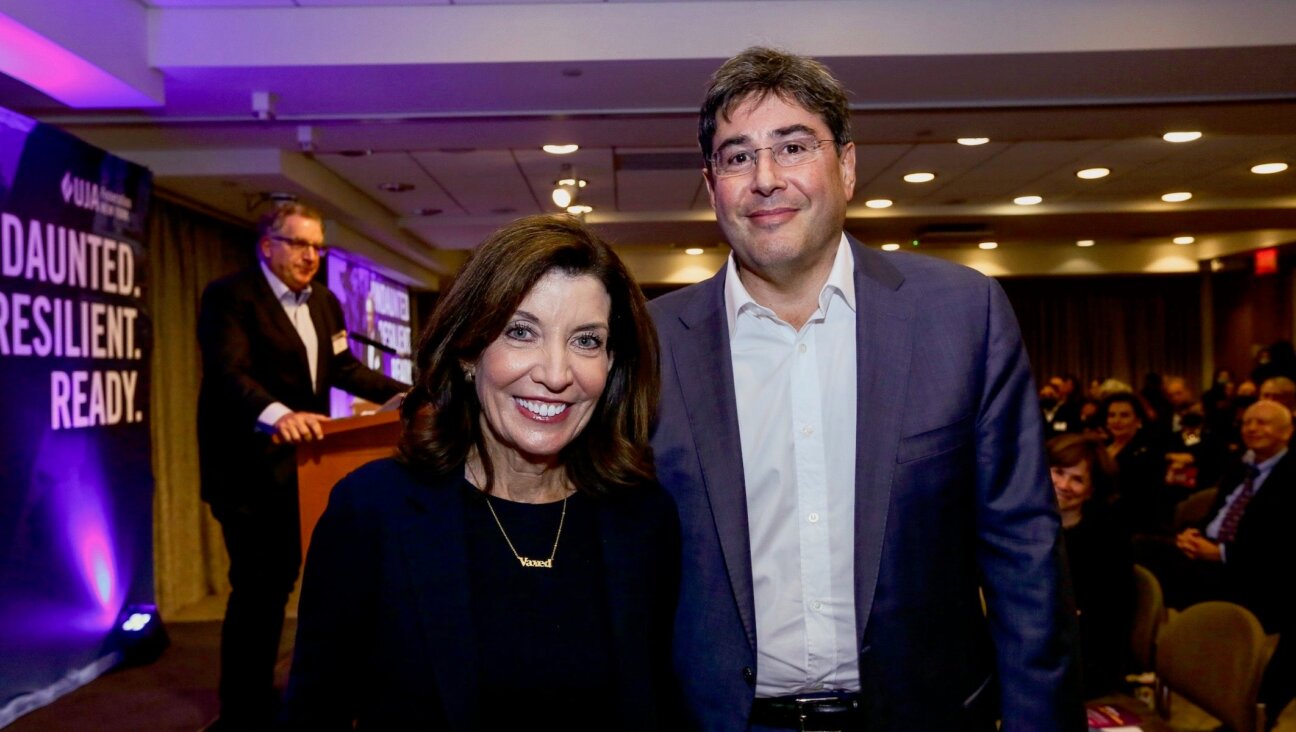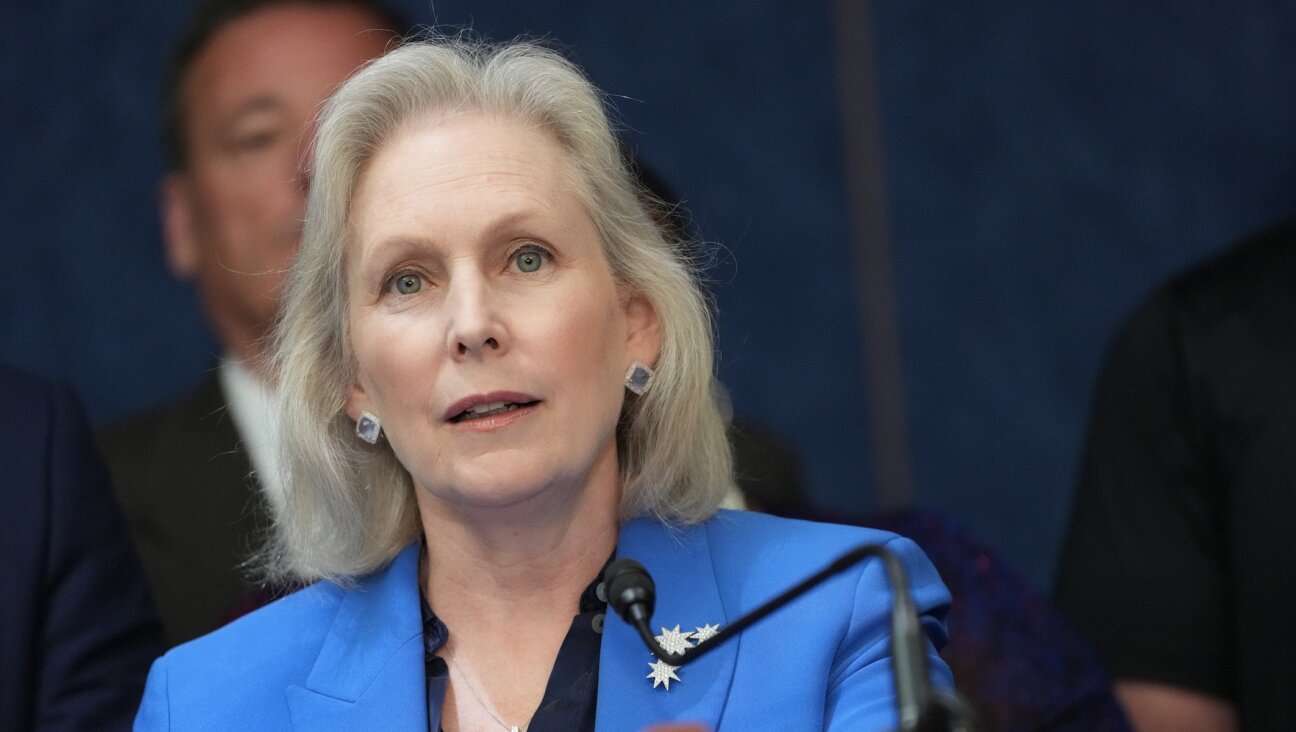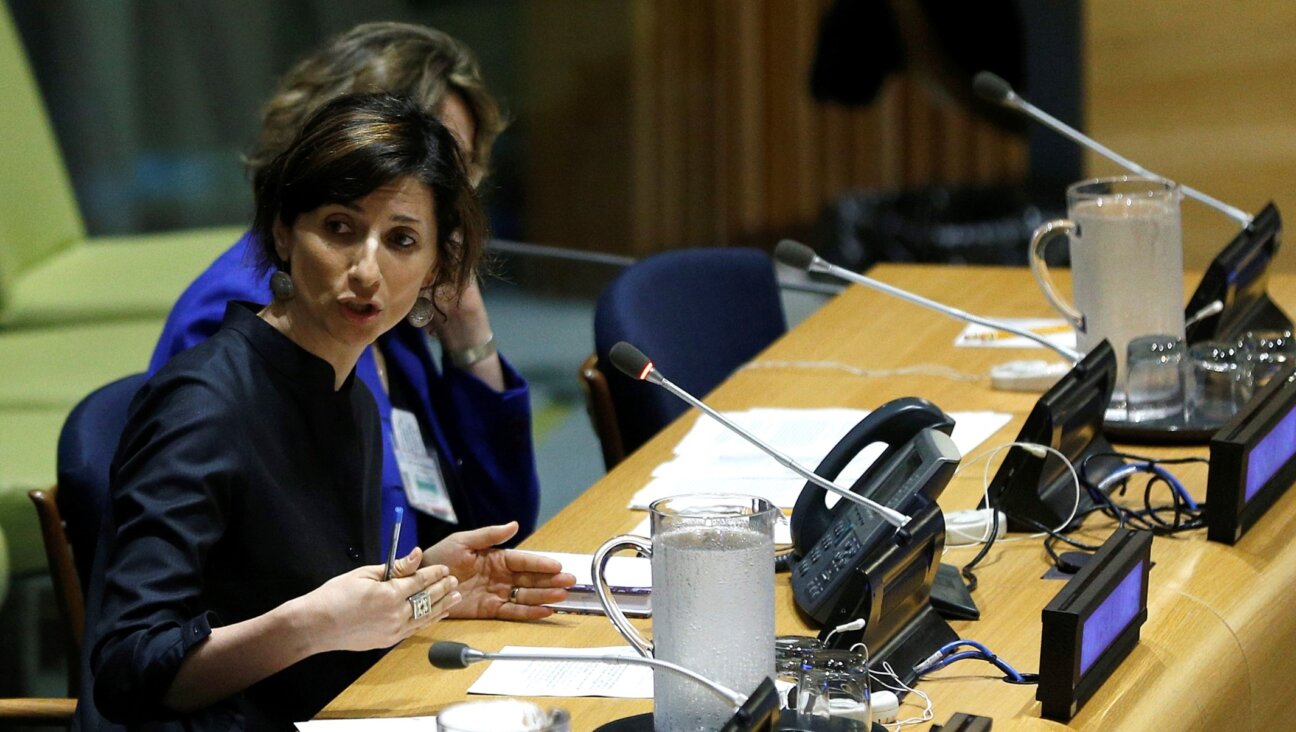Information on Nazi-Era Mass Graves To Be Made Available to the Public
For seven years, the Rev. Patrick Debois has devoted his life to locating and marking the mass graves of Jews murdered by the Nazis. Now, the work of the Catholic priest is going online — thanks to a joint initiative between his Paris-based organization and Washington’s United States Holocaust Memorial Museum.
Yahad — In Unum, founded and directed by Debois, has documented mass graves in some 600 Eastern European villages. Information about those gravesites, as well as videotaped accounts from villagers who witnessed the Nazi roundups and killings, will be available this summer at the U.S. Holocaust museum. Yahad — In Unum has also joined forces with the American Jewish Committee to help ensure that the newly discovered gravesites are protected.
“I have the conviction we cannot build a modern Europe with thousands of mass graves of Jews killed like animals,” Debois said at a May 12 State Department gathering held in his honor. “We cannot build a new world if we keep on being silent.”
Debois now believes he is halfway through the task of locating all of the Nazi-era Jewish mass graves in Eastern Europe. The name of the organization is taken from the Hebrew and Latin words for “together.”
Debois’s work focuses on the lesser-known part of the Nazi killing machine, which was responsible for the murders of hundreds of thousands of Jews. Most of those Jews were not sent to death camps; rather, they were shot to death, between 1941 and 1944 in Russia, Poland, Ukraine and Belarus
Going from village to village, S.S. units called out all Jewish residents based on lists the Soviets kept, shot them and buried them in mass graves dug by either the Jews themselves, or by village residents forced to work for the Nazis. The gravesites were covered and forgotten during the Soviet era and became accessible only after the collapse of the communist bloc.
Now Yahad — In Unum has deployed four teams that go door-to-door, looking for elderly residents who are willing to provide testimony about what they witnessed during World War II. The full interviews are available at the Holocaust museum in Washington and at Yahad — In Unum headquarters in Paris.
The purpose of these interviews, Debois told the Forward, is not to dive into motives and feelings of residents, but merely to collect the facts. “We are like investigators,” he said.
Based on the interviews and on documentation, the activists locate the mass graves, mark them and dedicate the site in a Jewish ceremony.
Debois became intrigued by the plight of Eastern-European Jews after hearing about the experience of his grandfather, who was deported during the war to a camp for Communist dissidents in Russia. Coming from a small village in Burgundy, Debois said, taught him that no secrets can be kept in a village. And as it turns out, the villagers in the Eastern European countries have proved very knowledgeable about what happened to their Jewish neighbors during the war. The Nazis could not keep the secret the mass murders in the small villages, where Jews made up a significant portion of the local population.
Debois believes that Yahad —In Unum has only another five years to find enough living witnesses who can help complete the documentation project.
The group is seeking donations to fund its continued activity. Its budget for 2011 is $2.85 million, of which $2.3 million has already been contributed. For 2012, Yahad — In Unum has set a budget of $3.06 million, two-thirds of which has been raised.
Hannah Rosenthal, a State Department special envoy and head of the Office to Monitor and Combat Anti-Semitism, hosted the tribute to Debois. She has suggested that local American Jewish communities adopt villages where gravesites were identified, and help fund the sites’ preservation.
Contact Nathan Guttman at [email protected]






















